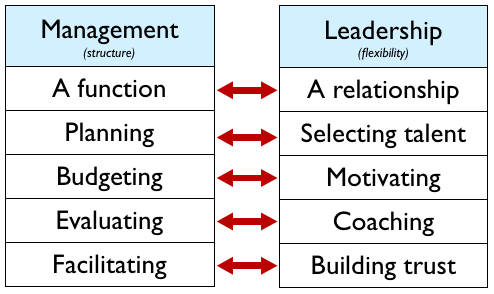Leadership and management

Management and leadership are important for the organization to be healthy and productive. In the three chapters, there are different aspects of the human side of management and leadership that are explored. The paper will look at three aspects of the human side of management and leadership that have been brought out in the chapters.
In chapter six, there is a discussion of the aspect of directing. This is a human aspect of leadership in that it focuses on how managers direct others and motivate them towards achieving the goals of the organization. There are different leadership styles that managers can use when directing their followers. These include autocratic style whereby the leaders make decisions without the input of their subordinates. They expect their subordinates to take the responsibility of conducting the required task without giving them any explanation.
Democratic style involves managers seeking input from their followers but have the authority of making the final decision. Laissez-faire style is whereby the managers adopt a hands-off approach and give very little direction to the subordinates. The employees are given a considerable amount of freedom for m making decisions and solving problems. Transformational leadership is the most effective in organizations today. This is because organizations want managers who can create positive relationships with their employees and motivate them to focus on the organization’s interests (Giuliani, & Kurson, 2002).
The other human aspect of leadership and management discussed in chapter seven is human resource management. Human resource entails the recruiting, motivation and keeping of quality employees. Organizations should have a strategic HR plan that puts in place steps that can be used to make sure that they have the right number of employees and with the right skills. The HR should come up with a strategy of recruiting quality employees into the organization. The recruitment process only gets individuals to apply for the position and once applications have been received, the best candidates have to be selected. Selection involves gathering important information on the candidates, conducting and evaluation of their qualification and choosing the one who is best fit for the position. After successful applicants get employed, the organization has the duty of training and developing them. The training and development will help in the creation of a diverse workforce. Employees have to be motivated so that they can work towards achieving the goals of the organization (Mondy, & Noe, 2005).
In chapter 8, human aspect of leadership and management that has been discussed is communication. Communication is important in every organization as it helps in passing information from one person or department to another. Leaders and managers should have good communication skills to enable them to effectively communicate with their subordinates. Effective communication is important as it helps in making decisions and solving problems faster. It also helps in making potential problems be known earlier and hence get solved faster. Effective communication also helps in a smooth flow of work and hence increases productivity. An organization should have effective downward communication from the leaders to the subordinates (Hartley, & Bruckmann, 2002). This will help in efficient working in the organization and hence an increase in productivity. The directing aspect of leadership should be valued because it has a great impact on how employees carry out their duties. The use of a good leadership style will positively impact the organization.
Human resource management should be valued since it leads to the bringing in and retaining the best employees into the organization. This is an important human aspect of leadership and management as it directly involves how an organization gets the best suited employees and retains them.
The aspect of communication should be valued because it helps effective flow of work in an organization. Without communication, different departments would not work together towards achieving the common goals of the organization.
Conclusion
Leadership styles, human resource management and communication are important human aspects of communication. All these three aspects have an important role to play when it comes to the success of the organization.
References
Giuliani, R., & Kurson, K. (2002). Leadership. New York: Hyperion.
Hartley, P., & Bruckmann, C. (2002). Business communication. London: Routledge.
Mondy, R., & Noe, R. (2005). Human resource management (9th ed.). Upper Saddle River, N.J.: Pearson Prentice Hall.
This post has received a 1.76 % upvote from @booster thanks to: @kwlbrdr.